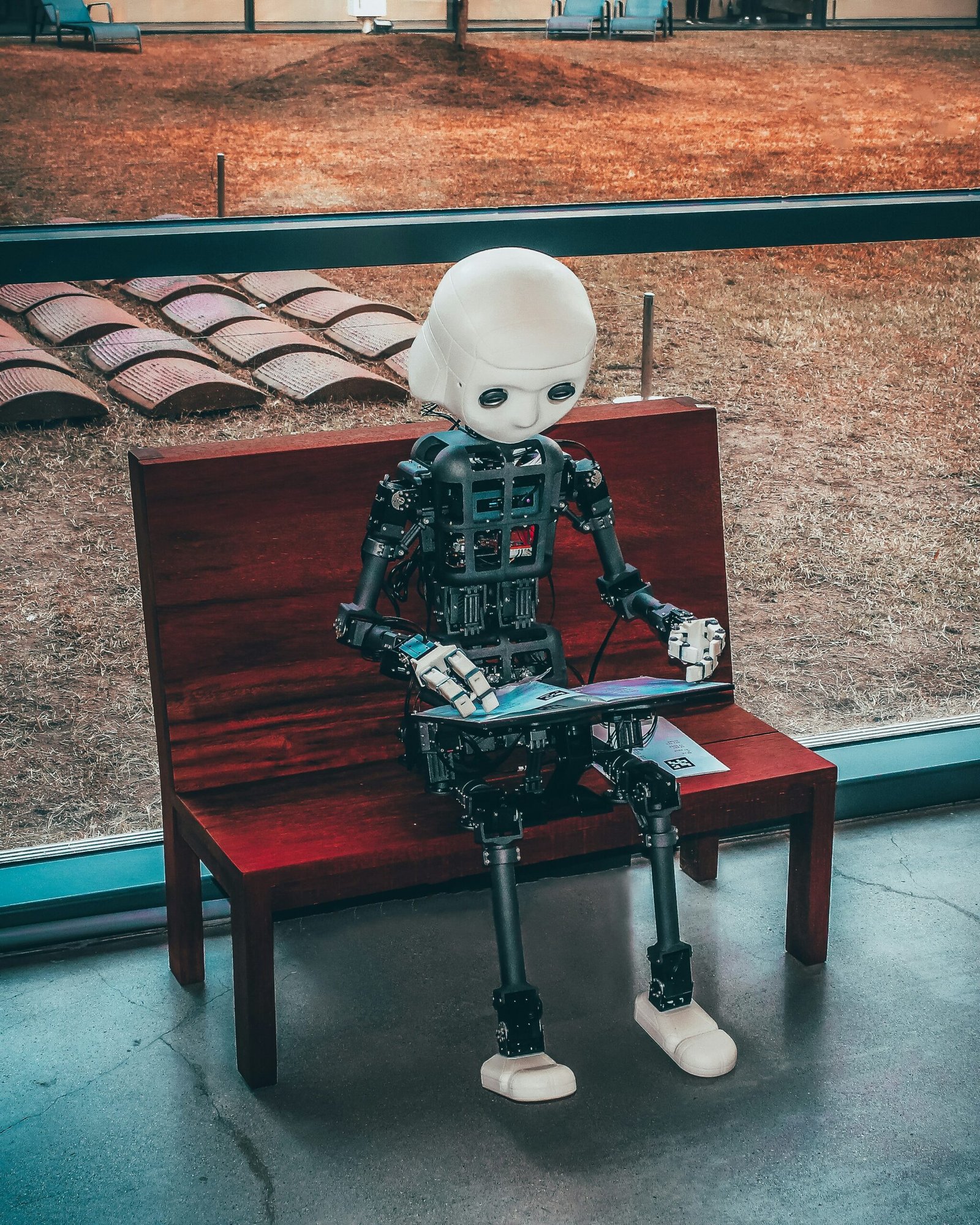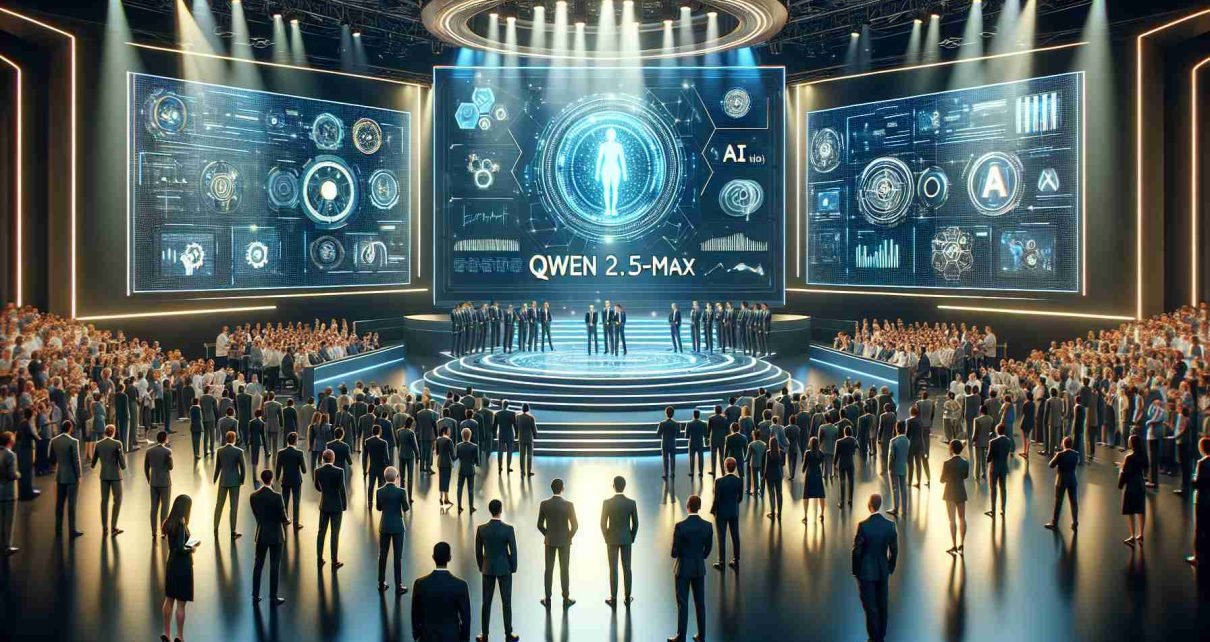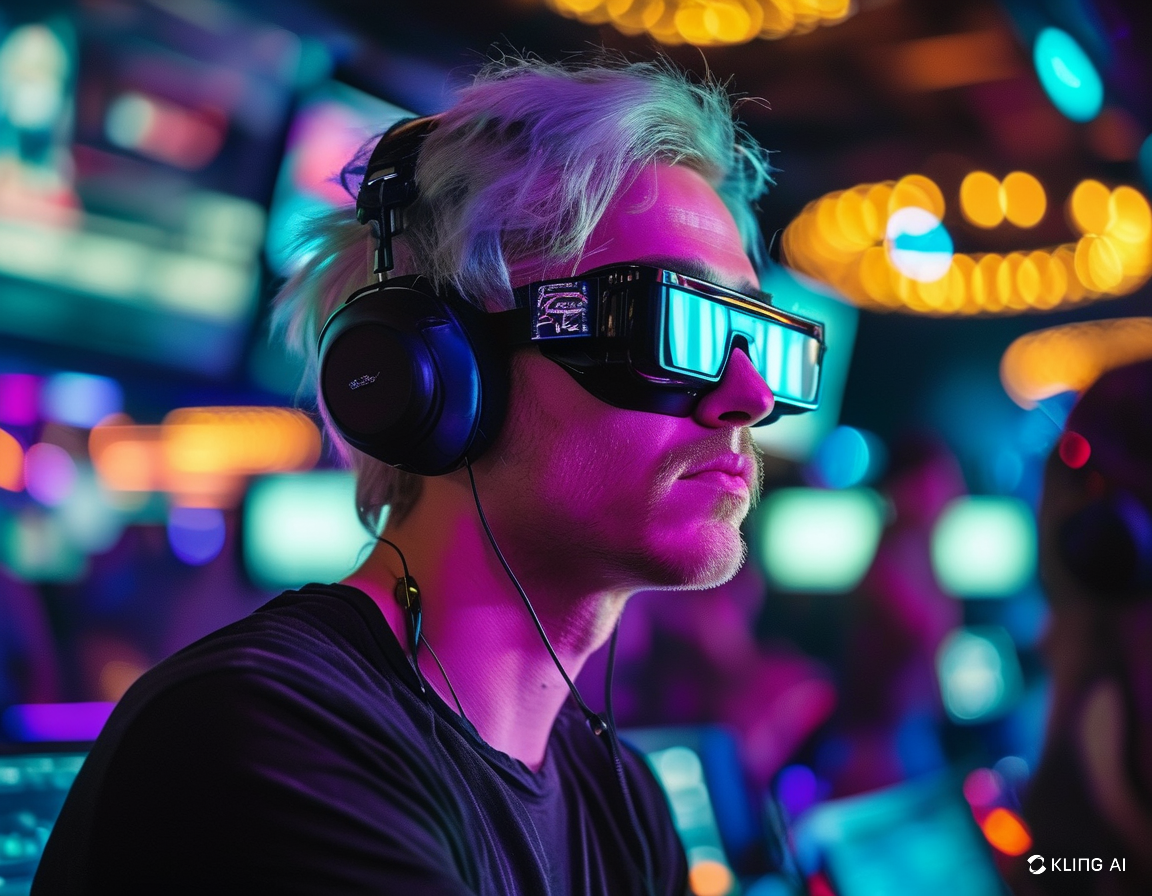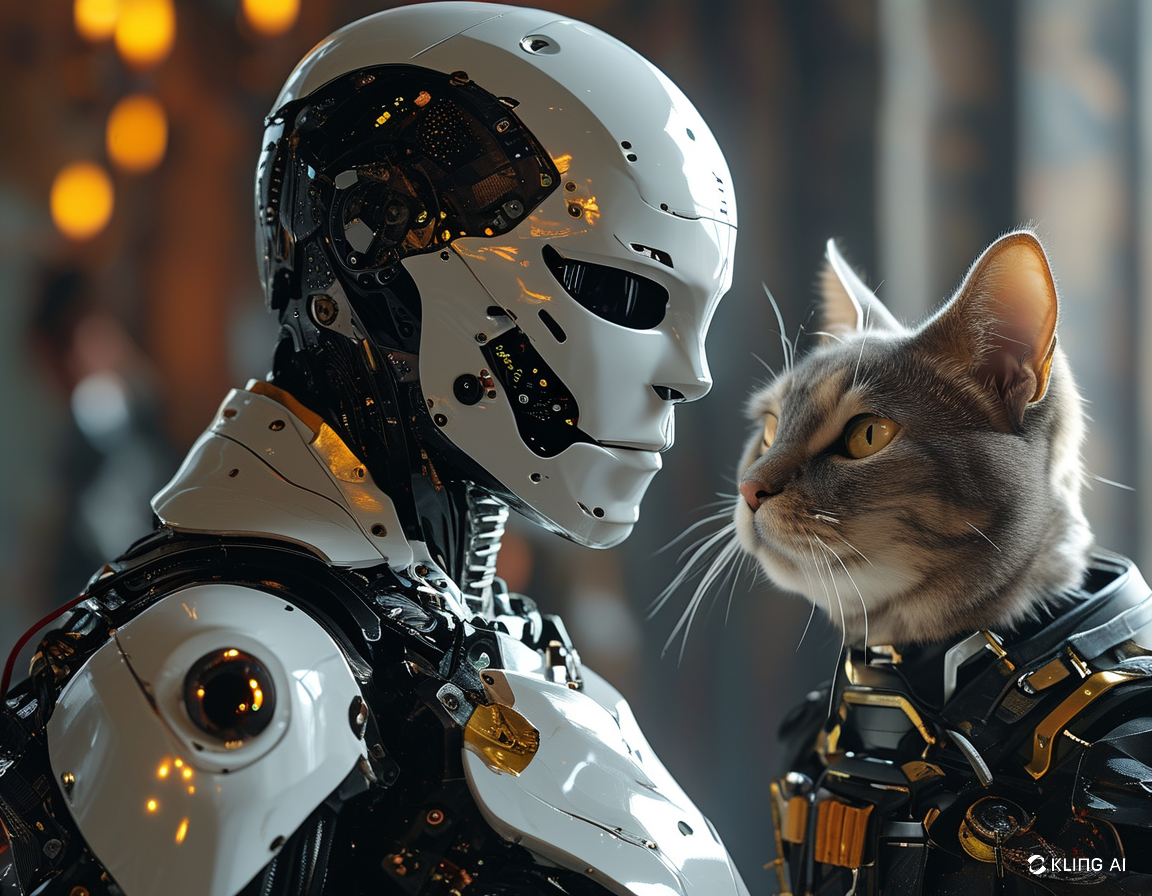Introduction to AI Evolution
The evolution of artificial intelligence (AI) reflects a remarkable journey characterized by significant milestones that have shaped its contemporary landscape. From its inception in the mid-20th century, AI has undergone transformative changes, driven by advancements in computational power, algorithmic design, and the availability of robust datasets. The foundational technologies that underpin modern AI can be traced back to early attempts at machine learning, which laid the groundwork for more complex systems. These systems enable machines to learn from data, identify patterns, and make predictions, bridging the gap between theoretical concepts and practical applications.
One of the most transformative eras in AI history is marked by the emergence of natural language processing (NLP). This specialized subfield focuses on the interaction between computers and human language, aiming to improve the ability of machines to understand, interpret, and produce human language in a meaningful way. The evolution of NLP has been pivotal, resulting in the development of sophisticated language models. Such models include DeepSeek R1 and ChatGPT, which have gained prominence due to their ability to facilitate human-like conversations and comprehend complex queries.
The introduction of these advanced models signals a new chapter in the AI narrative. Both DeepSeek R1 and ChatGPT leverage deep learning techniques and vast datasets to deliver relevant, context-aware responses across a multitude of tasks. As AI continues to evolve, understanding these milestones and the technological foundations that support them will provide valuable context for evaluating the capabilities and potential of these emerging platforms. The comparative analysis between DeepSeek R1 and ChatGPT will further illuminate the future trajectory of AI technologies and their probable influence on diverse sectors.
What is DeepSeek R1?
DeepSeek R1 represents a significant advancement in the domain of artificial intelligence, characterized by its cutting-edge architecture and robust capabilities. Developed by a team of cybersecurity and machine learning experts, DeepSeek R1 embodies a novel approach to natural language processing and data analysis, differentiating itself from existing AI models like ChatGPT. The architecture of DeepSeek R1 is designed to optimize performance metrics such as response accuracy, processing speed, and user engagement, catering to a diverse range of applications.
This AI model leverages an ensemble of deep learning algorithms, effectively processing large datasets with unparalleled efficiency. Its architecture integrates recurrent neural networks (RNNs) and transformer models, enabling it to understand context and generate coherent responses. As a versatile tool, DeepSeek R1 is suitable for various applications, including customer support, content generation, and data interpretation, serving both small enterprises and large corporations alike.
The development process of DeepSeek R1 involved extensive testing and iteration, allowing the team to refine its algorithms and enhance its user experience. Rigorous performance evaluations were conducted to ensure the model meets high standards of reliability and responsiveness. Moreover, DeepSeek R1 prioritizes user experience through an intuitive interface and customizable features, making it accessible for users with varying levels of technical expertise.
What distinguishes DeepSeek R1 from other AI models in the market is its focus on adaptability and contextual awareness. It aims to provide precise and relevant information, fostering effective interactions in diverse environments. With its commitment to enhancing user satisfaction and operational efficiency, DeepSeek R1 is poised to transform how businesses utilize AI technology, paving the way for future innovations in artificial intelligence.
What is ChatGPT?
ChatGPT, developed by OpenAI, is an advanced AI language model that beckons a new era in human-computer interaction. Built upon the Generative Pre-trained Transformer (GPT) architecture, ChatGPT was designed to engage in conversations with users, allowing for more natural and intuitive exchanges compared to traditional methods of communication. Originating from OpenAI’s commitment to ensuring AI benefits all of humanity, ChatGPT represents a significant step in the evolution of natural language processing technologies.
The core design principles behind ChatGPT emphasize versatility and depth. This model can generate human-like responses, hold context through multiple conversational turns, and adapt its tone and style according to user prompts. By training on diverse internet texts, ChatGPT has gained a profound understanding of language, enabling it to offer insights or assist with queries across a range of topics, from general knowledge to specific technical advice.
ChatGPT’s capabilities make it suitable for various applications. In the educational sector, it serves as a tutor, guiding students through complex subjects and encouraging critical thinking. In customer service, businesses utilize ChatGPT to automate responses, significantly improving efficiency while maintaining a high level of user satisfaction. Additionally, the creative industries see its potential for brainstorming ideas, drafting content, and even composing music or poetry. This wide spectrum of functionalities showcases the model’s adaptability and relevance in various contexts.
Since its inception, ChatGPT’s evolution reflects continuous improvements in accuracy and contextual awareness. As newer iterations are developed, user feedback plays a crucial role in refining its capabilities. The enthusiastic reception across multiple sectors illustrates ChatGPT’s potential as a transformative tool in the landscape of artificial intelligence, paving the way for further advancements and applications in the future.
Comparative Analysis of Capabilities
In the rapidly evolving landscape of artificial intelligence (AI), two contenders, DeepSeek R1 and ChatGPT, have garnered significant attention. A thorough comparative analysis of their capabilities reveals both advantages and limitations that may influence their standing in future applications. At the core of their functionality is natural language understanding, which is essential for effective interactions. ChatGPT has been praised for its conversational abilities, demonstrating a strong grasp of language nuances and context. DeepSeek R1, however, utilizes advanced algorithms to analyze linguistic patterns, leading to a robust comprehension that excels in technical and domain-specific inquiries.
Context retention is another critical component, particularly in extended conversations. ChatGPT has received positive feedback for maintaining context over multiple exchanges, making it suitable for casual interactions. Contrarily, DeepSeek R1’s design focuses on data retention over prolonged sessions, providing detailed responses that reflect a deep understanding of persistent topics. This feature may be crucial in specialized fields where continuity and depth of information are imperative.
Creativity in content generation stands as a key differentiator for AI systems. ChatGPT is renowned for its innovative approach, often delivering creative and engaging outputs that appeal to a broader audience. In comparison, DeepSeek R1 tends to generate content that is more structured and factual, which may resonate better in professional environments where accuracy is prioritized. User testimonials illustrate this divide, with many praising ChatGPT for its ability to produce imaginative articles, while others commend DeepSeek R1 for its clarity and precision in academic or technical writing.
Responses in complex scenarios present another layer of differentiation. ChatGPT often thrives in scenarios requiring empathy or nuanced emotional understanding. Conversely, DeepSeek R1 excels in environments necessitating critical thinking and data-oriented responses. Overall, while both AI systems offer unique strengths, their effectiveness may largely depend on the specific requirements of the task at hand.
User Experience and Interface
When evaluating AI models like DeepSeek R1 and ChatGPT, the user experience and interface significantly impact how effectively users can interact with these technologies. Both platforms emphasize accessibility, albeit with their unique approaches. DeepSeek R1 adopts a streamlined design that prioritizes user-friendliness, enabling newcomers and seasoned professionals alike to engage seamlessly. Its intuitive layout fosters easy navigation, and users can quickly find the features they need without unnecessary complexity.
On the other hand, ChatGPT’s interface also champions accessibility but enhances customization options. Users can adjust settings to tailor the interaction level, for instance, by selecting tones or styles that suit their preferences. This level of personalization has garnered positive feedback from a diverse user base, particularly among those in creative fields who value a more tailored experience. However, some users have expressed that the multitude of customization options may initially overwhelm those unfamiliar with AI technologies.
Responsiveness is another critical element when comparing these interfaces. In testing scenarios, DeepSeek R1 has shown commendable performance, providing quick responses even under load. This responsiveness contributes to a smoother user experience, especially in professional settings where time efficiency is key. Conversely, ChatGPT’s response times can vary based on usage traffic, impacting usability during peak periods. That said, when operational, ChatGPT offers rich and nuanced replies, contributing to a deeper conversational experience.
User feedback on usability reveals that both platforms are well-regarded, though distinctions arise based on individual requirements. DeepSeek R1 is often praised for its simplicity, making it an excellent choice for users seeking direct, efficient interactions. In contrast, ChatGPT’s flexibility and adaptability appeal to those interested in more dynamic and personalized engagements. Thus, the choice between these models ultimately hinges on personal preferences related to user interface and specific use cases.
Integration and Versatility
The integration and versatility of artificial intelligence models like DeepSeek R1 and ChatGPT are paramount for their successful deployment in various applications. Both platforms exhibit distinct features that enhance their operability with other tools and ecosystems. Understanding these aspects can provide insight into their potential as AI solutions.
DeepSeek R1 is designed with extensive API support, allowing developers to seamlessly integrate this AI model into diverse applications and workflows. Its compatibility with numerous programming languages and frameworks facilitates easy incorporation into existing infrastructures, ensuring organizations can leverage its capabilities without significant disruption. Furthermore, the model’s strong support for plug-ins allows users to expand functionality further, making it highly adaptable to unique business needs.
Conversely, ChatGPT boasts a robust ecosystem that includes a variety of platforms and applications where it can be embedded. Its API provides extensive access for developers, allowing the AI to be integrated into website chat interfaces, customer support systems, and educational tools. This breadth of application demonstrates ChatGPT’s versatility in accommodating different user demands across various industries.
When assessing versatility, the ease of deployment also plays a critical role. DeepSeek R1 allows for a straightforward setup process, making integration less time-consuming, which is particularly advantageous for organizations operating in fast-paced environments. On the other hand, ChatGPT’s user-friendly interfaces and extensive documentation promote quick adoption, ensuring that even teams with limited technical expertise can implement the model effectively.
In summary, both DeepSeek R1 and ChatGPT showcase impressive integration capabilities and versatility in various contexts. Their adaptability is crucial for organizations looking to harness AI technology, making them formidable contenders in the future landscape of artificial intelligence applications.
Future Prospects and Innovations
The field of artificial intelligence is witnessing rapid advancements, and both DeepSeek R1 and ChatGPT are positioned at the forefront of this evolution. Ongoing research is exploring various enhancements that could redefine their capabilities. For DeepSeek R1, future prospects may involve improvements in natural language processing that enable the model to better understand context, nuance, and subtleties in user interactions. This enhancement could lead to more intuitive conversations, making it an invaluable tool for industries that rely on precise communication, such as customer service and technical support.
On the other hand, ChatGPT is also set for significant innovations. Current research focuses on increasing the model’s ability to generate human-like responses while minimizing biases that can sometimes arise from incomplete datasets. By integrating advanced machine learning techniques and larger, more diverse training sets, ChatGPT aims to enhance its cultural competence and contextual adaptability, positioning itself as a leading conversational agent across multiple sectors, including education and mental health support.
Experts in AI assert that the operational intersection of these two models could redefine the industry. Predictive analytics and data analysis capabilities are becoming increasingly vital, and both DeepSeek R1 and ChatGPT could evolve to incorporate these features, offering users deep insights along with interactive experiences. The future of AI seems promising as collaborative efforts between developers and researchers continue to push the boundaries of what is achievable.
Furthermore, ongoing advancements in hardware technology, such as quantum computing, may offer new opportunities for both models to process information at unprecedented speeds. As AI continues to mature, the competitive landscape between DeepSeek R1 and ChatGPT will likely foster innovative solutions that redefine user experiences, establish new industry standards, and reshape how artificial intelligence is integrated into our daily lives.
Industry Adoption and Market Impact
The adoption of artificial intelligence technologies, including DeepSeek R1 and ChatGPT, has been transformative across various industries. As companies strive to enhance business efficiency, consumer engagement, and drive innovation, both these AI systems have demonstrated unique capabilities that cater to diverse sectoral needs. For instance, the technology sector has seen a significant uptake of ChatGPT for tasks such as customer support and programming assistance. With its intuitive natural language processing (NLP) abilities, ChatGPT allows developers and companies to automate responses, streamline workflows, and enhance user experiences, effectively decreasing operational costs.
In the finance industry, DeepSeek R1 has been instrumental in risk assessment and fraud detection. By utilizing advanced machine learning algorithms, this tool has successfully analyzed vast datasets to identify irregular transaction patterns, helping financial institutions mitigate risks. Moreover, case studies indicate that the integration of DeepSeek R1 within banks has led to improved efficiency in compliance reporting and faster decision-making processes, paving the way for a more resilient financial landscape.
The healthcare sector, too, has begun to leverage the unique strengths of both technologies. ChatGPT’s ability to facilitate patient engagement through automated chat services has proven beneficial in appointment scheduling and follow-up reminders. Meanwhile, DeepSeek R1’s deep learning techniques are harnessed for predictive analytics to enhance patient outcomes and optimize treatment plans. By adopting these AI technologies, healthcare providers are witnessing improved operational efficiency and enhanced patient satisfaction.
As industries continue to explore the potential of AI tools, success stories continue to emerge, demonstrating the significant impact of these technologies on business processes. From increasing innovation avenues to fostering better consumer relationships, both DeepSeek R1 and ChatGPT are reshaping the future of various industries. The ongoing dialogue surrounding these AI systems highlights the prospect of substantial market impact as companies integrate AI into their strategic frameworks.
Conclusion: The Future of AI Leadership
As we have explored throughout this analysis, the competition between DeepSeek R1 and ChatGPT showcases significant advancements within the field of artificial intelligence. Both entities represent unique approaches to AI development, each with distinctive features that cater to varying user needs and preferences. DeepSeek R1 is characterized by its robust data processing capabilities and high efficiency, making it suitable for enterprises seeking powerful analytical tools. Conversely, ChatGPT excels in natural language processing, offering an intuitive interface that enhances user interaction and engagement.
The dominance of one AI solution over the other will not solely depend on their technical specifications but also on a range of factors influencing the AI landscape. These include user adoption rates, the ability to integrate into existing systems, and the continuous evolution of AI ethics and governance. As we move forward, the demand for ethical considerations and transparency in AI development will likely shape the competitive dynamics between DeepSeek R1 and ChatGPT. Stakeholders, including developers and users, will need to advocate for responsible AI deployment that aligns with societal values and individual privacy rights.
Furthermore, it is essential for users and organizations to stay informed about emerging trends and functionalities in AI. Keeping abreast of technological advancements will enable users to leverage the strengths of each platform optimally. Preparing for future developments will involve not only understanding the capabilities of both DeepSeek R1 and ChatGPT but also actively participating in discussions surrounding usability, accessibility, and innovation in the AI sector.
In conclusion, the rivalry between DeepSeek R1 and ChatGPT is set to significantly influence the trajectory of artificial intelligence. As both platforms continue to evolve, users must remain vigilant and adaptable, ready to embrace the changes that will undoubtedly come in the field of AI.






